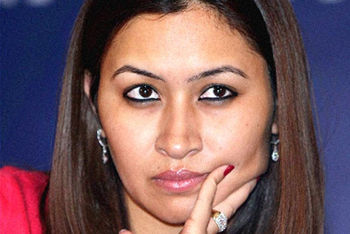Jan 20: Both Steve Smith and Rohit Sharma made sparkling centuries in Bengaluru, but it was the Indian who finished on the winning side, leading his team to a 2-1 series win.
Smith, having run out his captain Aaron Finch early on, dug in to bring up his ninth ODI century, his 131 off 132 balls setting India a target of 287 on Sunday, 19 January. Continuing the dazzling display of batting at the M Chinnaswamy stadium, Rohit struck 119 in 128 balls, and skipper Virat Kohli chipped in with 89, as the hosts chased down the target with seven wickets to spare in 47.3 overs.
With Shikhar Dhawan hurting his shoulder in the fifth over of the day and sidelined for the rest of the match, Rohit was reunited with KL Rahul – who had a chance to open the innings after coming in at No.3 and No.5 in the first two matches, while also standing in as wicket-keeper. The vice-captain was on the ball right away, dominating the scoring as India raced to 61/0 in the first 10 overs.
The introduction of spin gave Australia a vital breakthrough: Ashton Agar trapped Rahul in front on review, and although the new pair of Rohit and Kohli weren't unduly troubled, the run-rate slowed down. Josh Hazlewood, playing his first ODI in India and his first match in the format in 14 months, was especially miserly, conceding just 10 runs in his first five overs.
But, having settled in, the duo built a useful partnership of 137 and gave themselves the chance to hit out with wickets in hand. The part-time bowling of Finch and Marnus Labuschagne was punished, Rohit lapping up the short balls and sending them soaring into the stands. His century, his eighth against Australia, came with a single to third man.
Zampa finally got the breakthrough, having him caught in the deep going for another big one. But with Kohli having loosened his arms with a couple of beautiful fours off Pat Cummins to go past his half-century, India remained on course.
The skipper missed out on a hundred, but with Shreyas Iyer too clearing the ropes, there were no hurdles as India wrapped up an entertaining series win.
Earlier, the Indian bowlers struggled to find their lines after Australia chose to bat, but Australia weren't able to fully capitalise. David Warner was thrown by the movement to nick Mohammed Shami to the wicket-keeper, while Finch was caught short after Smith pulled out of a run, to leave the hosts at 46/2.
Labuschagne and Smith, though, combined for another special partnership, going at a brisk rate and showing delectable timing against spin. They had guided their side to 173 in the 32nd over when the a sharp piece of fielding from the home captain and strong bowling pulled things back.
Kohli, at cover, plucked a drive from Labuschagne soon after the batsman had reached his maiden fifty. Ravindra Jadeja had his second of the over when the experiment to send Mitchell Starc at No.5 lasted just three balls.
Alex Carey gave Smith company as he brought up a well-earned century, having fallen just short the previous game. The former skipper stepped up the scoring once he crossed three figures, a wristy helicopter six over deep square leg the highlight of his innings. But, excellent death bowling by Shami, who finished with four wickets, ensured the tourists were kept to under 300 – a total that proved below par.






Comments
Add new comment